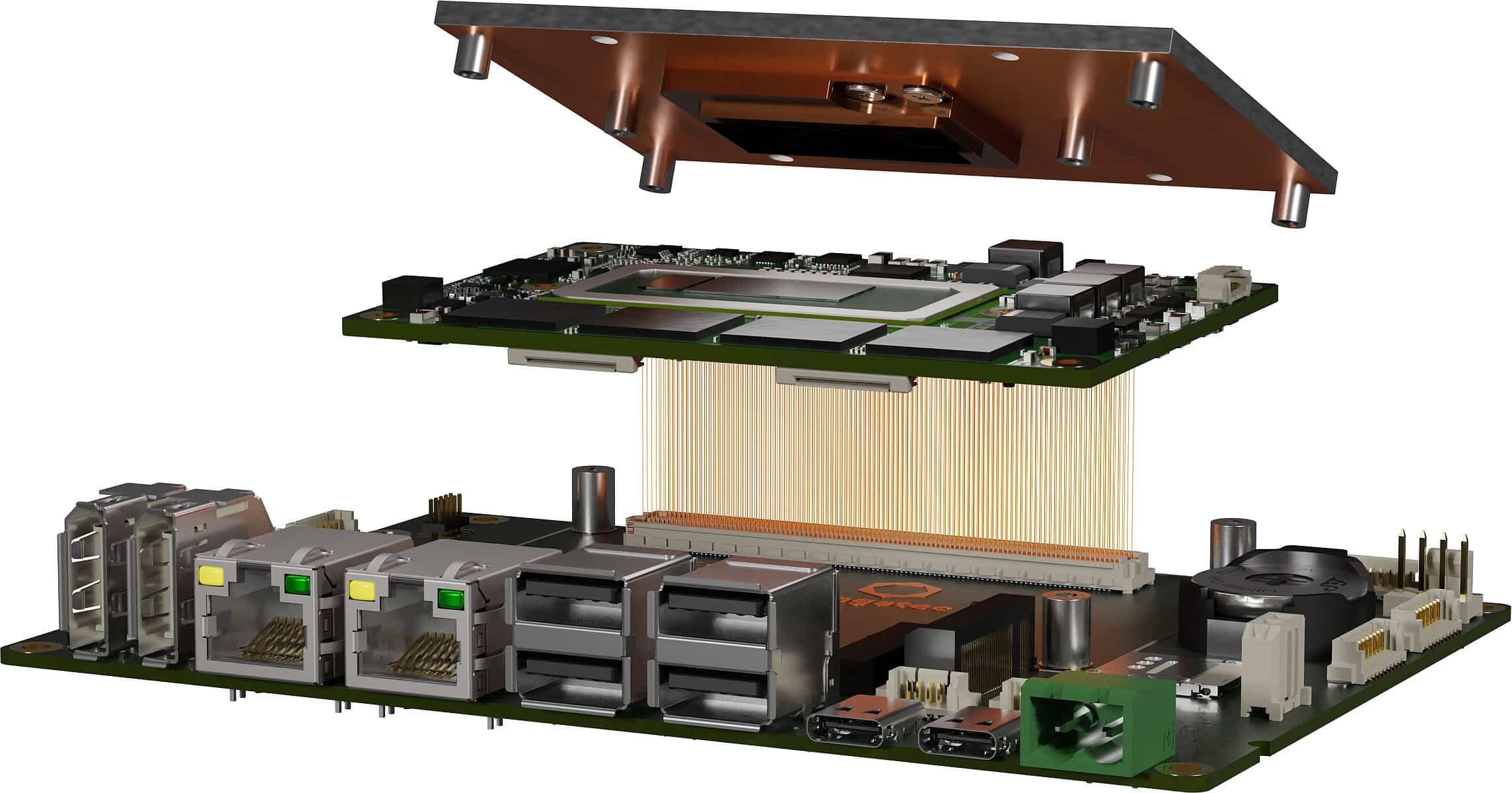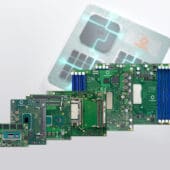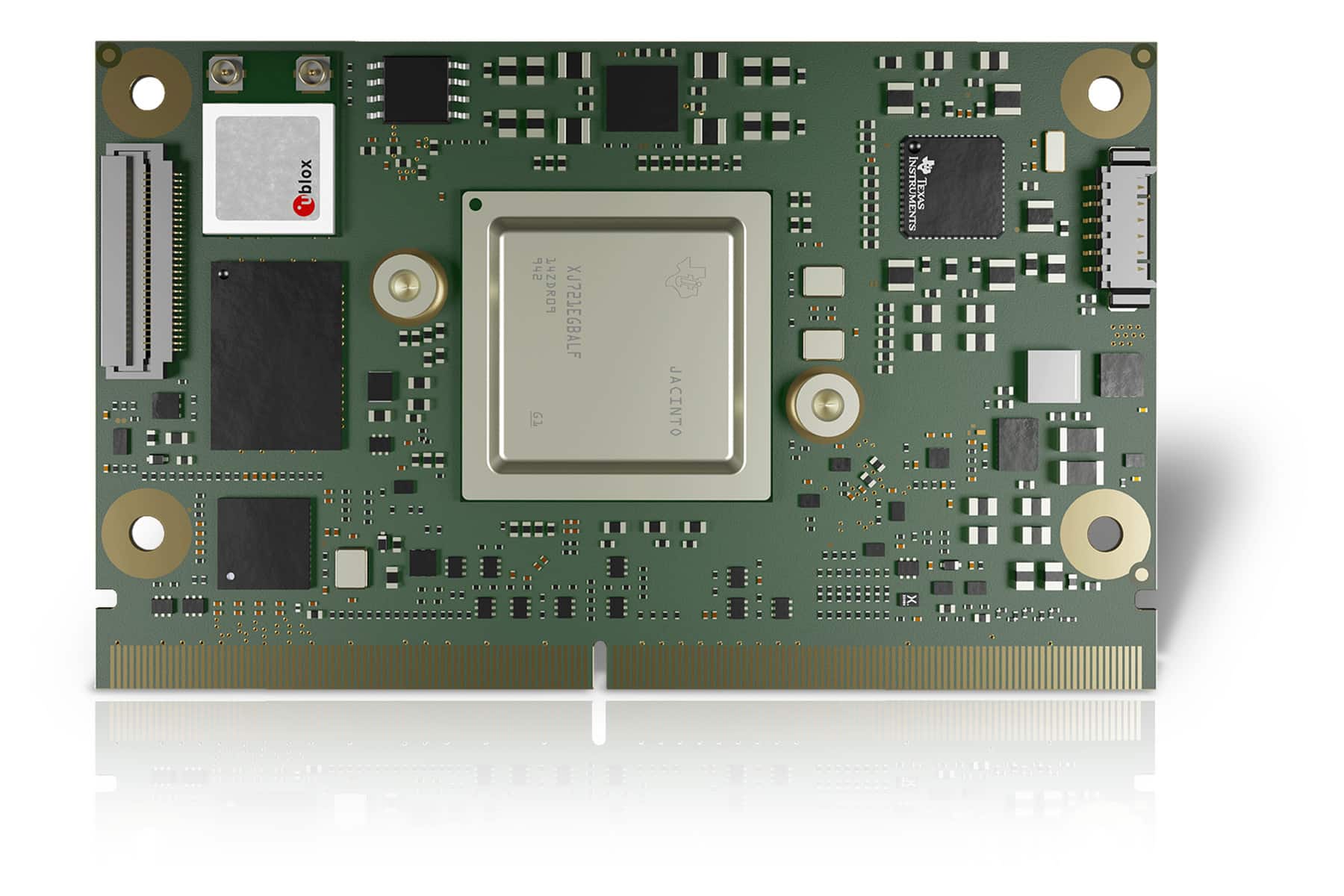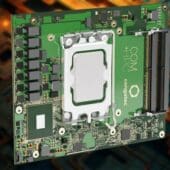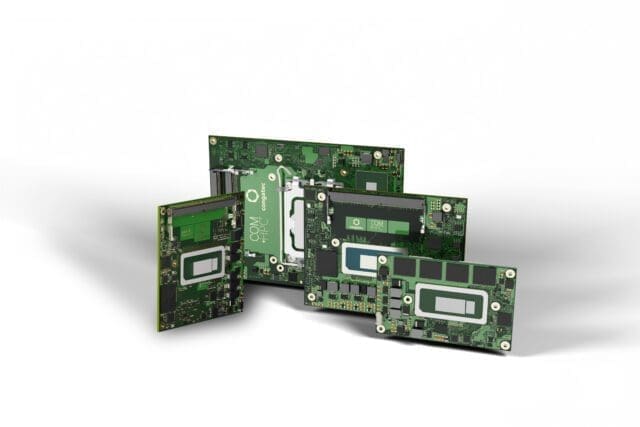
Author Christian Eder, Director of Product Marketing at Congatec
At the embedded world, congatec will present the first modules based on the preliminary COM-HPC Mini specification. And since modules alone are not enough to give OEMs the agility to optimize and expand their portfolio of solutions, congatec also offers a complete COM-HPC ecosystem, thus helping developers of ultra-compact, high-performance systems to unleash the Gordian knot of how to fit high performance into a mini size.
Digital transformation is bringing technology, machines and people closer than ever. Collaborative robots, autonomous vehicles, AI-powered medical devices, and faster 5G communications are just a few examples. To stay ahead in these growing markets, OEMs need to constantly review and optimize their solution offerings. A performance leap to COM-HPC is essential for many new applications in view of rapidly increasing technical requirements: AI-based video analysis for situational awareness requires immensely high bandwidths with increasingly camera resolutions tall. Voice control must be free of latency, which also requires the AI to process data streams of ever-higher resolution. Graphics in combination with augmented reality are also becoming more demanding. Parallel real-time data processing in collaborative Industry 4.0 processes also requires minimal latencies with ever-increasing data throughput. Last but not least, cybersecurity also demands more computing power. And on top of all this, system developers want to significantly optimize the connectivity of their platforms by taking advantage of the latest technologies, such as Thunderbolt 4.
The COM-HPC standard was developed precisely to meet these increasingly demanding requirements. Now, the spectrum of applications is further expanded as the availability of COM-HPC Mini modules powered by 13th Gen Intel Core processors (reference name Raptor Lake) will give developers access to a complete ecosystem for their modular computing designs. third-generation high-end edge and embedded devices. This ecosystem ranges from high-end Server on Modules (SOMs) to extremely compact Client-on-Modules that are barely larger than the size of a credit card. With COM-HPC Mini, even the most compact COM Express Compact and COM Express Mini solutions will be able to benefit from increased high-end performance and take advantage of significantly more new high-speed interfaces. In this way, entire product families can migrate to the new PICMG standard without the need for significant changes to the internal system design or enclosure, despite the increased dimensions of the module and motherboard.

high-performance interfaces in a size that barely exceeds the size of
a credit card.
Facilitate design work from COM Express Compact to COM-HPC
This was not possible with the COM-HPC Size A specification. With dimensions of 95x120mm (11.400mm2), the smallest COM-HPC format to date is almost 32% larger than COM Express Compact, which measures 95×95mm (9.025mm²). From a footprint standpoint, that's 25mm too wide to migrate existing COM Express designs to COM-HPC. With COM Express Compact being the most widely used COM Express form factor and currently only the high-end still using the larger COM Express Basic form factor, many developers faced considerable challenges, if only in terms of dimensions. system design. But now smaller is possible. That's why the COM-HPC Mini with its 95x60mm is a real liberator that opens up completely new perspectives, particularly for the many ultra-compact system designs.
It is true that COM-HPC Mini only has 400 pins, that is, 40 pins less than COM Express Type 6 (440). However, developers benefit from significant bandwidth gains and greater diversity of interfaces thanks to newer and more powerful standards. This also puts into perspective the nominal reduction in the number of PCIe lanes from 24 with COM Express Type 6 to 16 lanes with COM-HPC Mini. However, most ultra-compact system designs have rarely exhausted this bundle of interfaces. With PCIe up to Gen 5 and probably also PCIe Gen 6, 4x USB 4.0, 2x 10 Gbit/s Ethernet, which can be expanded to 4 ports via 2x SERDES lanes, and up to 4 display interfaces, the COM-HPC Mini specification has the most modern interfaces today. In addition to additional modern peripheral interfaces, such as 2x MIPI-CSI for cameras, industrial classics such as CAN bus and 2x UART are also provided. A new feature that has been added is functional security support. This will allow future ultra-compact applications that need to consolidate security-critical real-time tasks along with other tasks on a single system. Examples of this type of applications are robots and autonomous mobile vehicles.
New works better in the long run
Many developers of new high-performance applications will also appreciate the added design security, as the COM-HPC connector is specified for significantly higher data transfer rates than COM Express. It is true that the COM Express 3.1 specification, which was released at the end of 2022 and supports PCIe 4.0 with up to 16 Gbit/s, also offers an upgrade path. However, the end is already in sight for further performance increases. The recent launch of the 13th generation Intel Core processors demonstrated that the gap is starting to widen as COM-HPC simply offers more. Some variants already support PCIe 5.0, ultimately allowing you to double your data throughput. But developers don't have to worry if they can live with the bandwidths COM Express offers: The most popular COM module standard will still be around for many years to come. It continues to be supported by embedded system vendors and receives careful updates where technically possible. This is especially good for cost sensitive and/or low power designs where COM-HPC is over specified. However, those who want to take advantage of the latest technologies, such as Thunderbolt 4 connectivity, can now upgrade existing compact designs. Thunderbolt 4 ports implement power, bi-directional data transfer up to USB 3.2 Gen 2, as well as 4k video displays and 10Gb Ethernet over a single USB-C cable in maximum configurations. All of this requires a bandwidth of up to 40 Gbit/s, which is simply not feasible with the COM Express connector, even in the 3.1 specification.
Ready for takeoff with 13th generation Intel Core processors
Numerous factors speak in favor of the new COM-HPC standard. The release of the 13th generation Intel Core processors acts as an accelerator that will expedite the introduction of these new system platforms. congatec expects a rapid and massive increase in the series production of OEM designs based on these new modules, since the new processors with guaranteed long-term availability offer enormous improvements in many features, while being fully compatible in hardware with their predecessors, making implementation very fast and easy. Modules based on the new COM HPC standard open up new horizons for developers in terms of data throughput, I/O bandwidth, and performance density thanks to Thunderbolt and superior PCIe compatibility up to Gen 5. On the other hand, The new COM Express 3.1 compliant modules primarily secure investments in existing OEM designs with upgrade options for higher data throughput with PCIe Gen 4 support.
| COM-HPC Mini | COM Express 3.1 Type 10 (Mini) | COM Express 3.1 Type 6 (Compact & Basic) | |||
| Format | 95 × 60 mm | 84 × 55 mm | 95×95mm/125×95mm | ||
| Height | Height 5 or 10 mm (from the bottom of the module to the top of the motherboard) | Height 5 or 10 mm (from the bottom of the module to the top of the motherboard) | Height 5 or 8 mm (from the bottom of the module to the top of the motherboard) | ||
| Power consumption | 76 W | 68 W | 137 W | ||
| signal pins | 400 | 220 | 440 | ||
| PCIe (1) | 16 x PCIe Gen 5 | 4x PCIe Gen 4 | 24x PCIe Gen 4 | ||
| Graphics (1) | 3x DDI + 1x eDP | 1x DDI +1 LVDS/eDP | 3x DDI + 1x LVDS/eDP/VGA | ||
| Sound | HDA, SoundWire, I2S | 1x HDA/SoundWire | HDA (1x SoundWire optional) | ||
| camera inputs | 2x MIPI CSI (connectors on module) | 2x MIPI CSI (connectors on module) | 2x MIPI CSI (connectors on module) | ||
| Ethernet (1) | 2x 10 GbitE with TSN + 2x 10 GbitE (SERDES) with TSN | 1x GbitE with TSN | 1x GbitE with TSN | ||
| USB (1) | 4x USB 4.0, 4x USB 3.2 x1/SB 3.2 x1 + 8x USB 2.0 | 2x USB 3.2 + 8x USB 2.0 | 4x USB 3.2 or 2x USB 4.0 multiplexed with 2x DDI + 8x USB 2.0 |
||
| SATA (1) | 2x SATA Gen3 | 2x SATA Gen3 | 4x SATS Gen 3 | ||
| CAN | 1x | 2x | 2x | ||
| UART | 2x | - | - | ||
| GPIO | 12x | 8x | 8x | ||
| Others | eSPI, 2x SPI, SMB, 2x I2C | LPC/eSPI | LPC/eSPI | ||
| FuSa | Compatible | Not compatible | Not compatible | ||
Figure 3. Migrating from COM Express to COM-HPC brings many interface benefits.
Compared to 12th generation Intel Core processors, the new COM-HPC and COM Express modules with soldered 13th generation Intel Core processors offer several advantages: They enable robust designs for industrial temperature ranges from -40°C to + 85°C use Intel's innovative hybrid architecture, which is an industry first. In addition, they offer up to 8% better single-threaded performance and up to 5% better multithreaded performance. Thanks to the improvement of the manufacturing process, this increase in performance is accompanied by greater energy efficiency. Other firsts in this performance class (15-45W base power) are support for DDR5 memory and PCIe Gen 5 connectivity on select CPU versions. Both contribute to further improve multithreading performance and increase data throughput. With up to 96 Execution Units (EUs) and ultra-fast encoding and decoding capabilities, the integrated Intel Iris Xe graphics architecture is ideal for high graphics requirements, for example, in applications involving video streaming and/or web-based situational awareness. video. All of these features lead to significant improvements in a wide range of embedded and edge computing applications, which are increasingly implementing AI and machine learning capabilities, as well as workload consolidation.
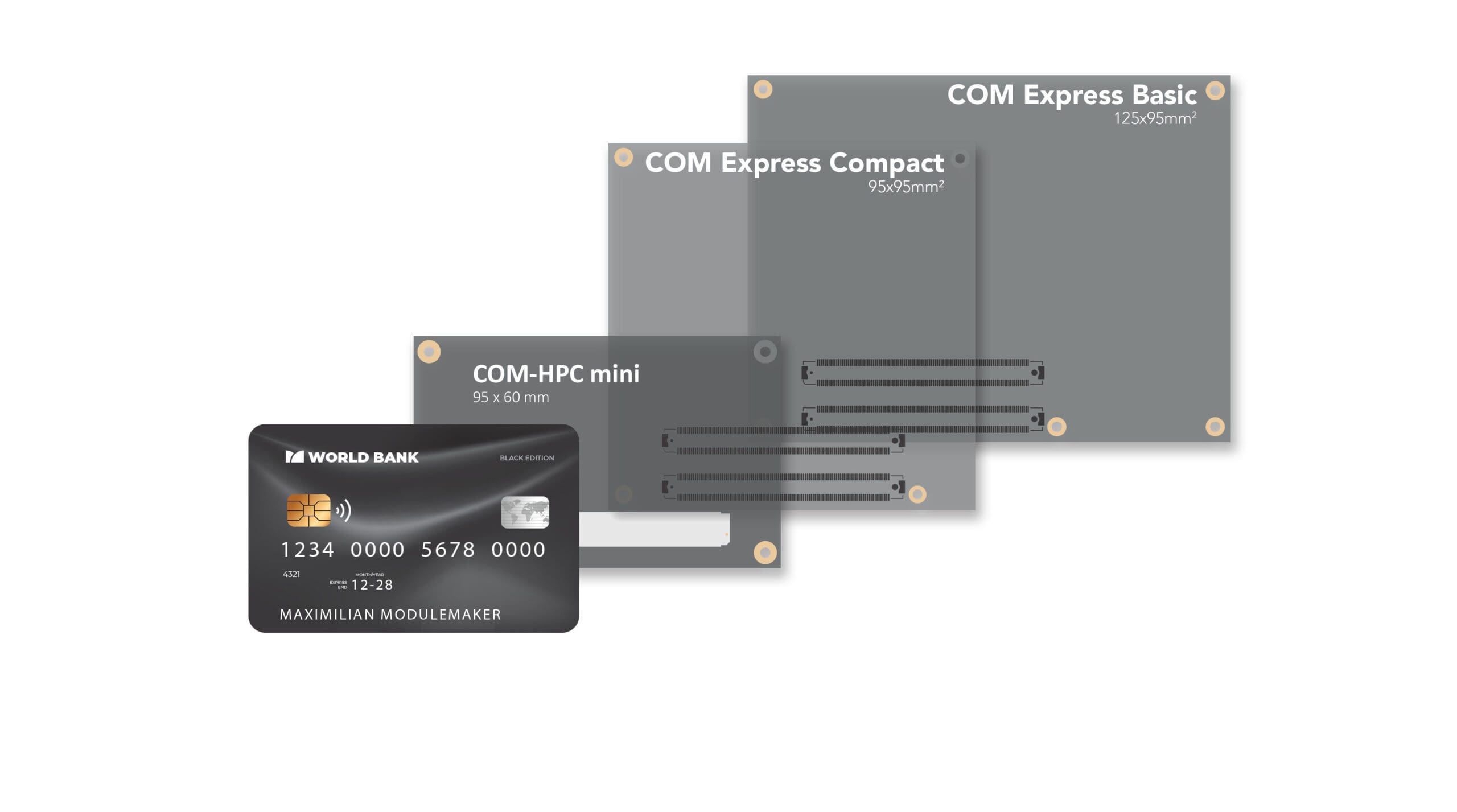
Compact can easily accommodate COM-HPC Mini modules.
COM-HPC Mini is extremely robust
Now imagine that these new Intel processors, along with robust features like soldered RAM and extended temperature range support, will be implemented in COM-HPC Mini modules. In that case, it is clear that these new modules will find universal use in high-performance system solutions that COM Express cannot address. There is only one question: How complex is it to migrate systems from COM Express to COM-HPC? Simply put, only the motherboard needs to be modified, although the dimensions and interface layout can remain unchanged. Certainly the routing and components must be adapted to accommodate the new features, and it is not possible to simply replace the module. However, when it comes to hardware, it is "just" a matter of adapting existing design practices to the new requirements of faster interfaces. High-speed signaling is a particular challenge in this context.

heatsink has a minimum height of 15mm (from the surface of the motherboard
to the heat sink). That is, 3 mm less than the minimum height of the system of 18
mm for COM Express Compact.
Additional services and training to simplify design
This is where manufacturers like congatec come to the aid of their customers with a training academy that teaches motherboard developers the best design practices. The training program is intended to provide system architects with a quick and efficient introduction to the design rules of the new PICMG standard. The course walks developers through all the required and recommended COM module design fundamentals and best practice schematics so they can start their own motherboard design projects. Knowledge transfer focuses on standards-compliant motherboard design, which is essential for building interoperable, scalable, and durable custom embedded computing platforms. The congatec academy works globally, offering online and face-to-face courses to OEM developers, VARs and system integrators.
Although official design guides are a great resource, they are ultimately nothing more than a requirements specification. Developers also need to learn how best to put these fundamentals into practice. The congatec training program was designed with the goal of accelerating the knowledge transfer required to initiate such development projects in the real world.
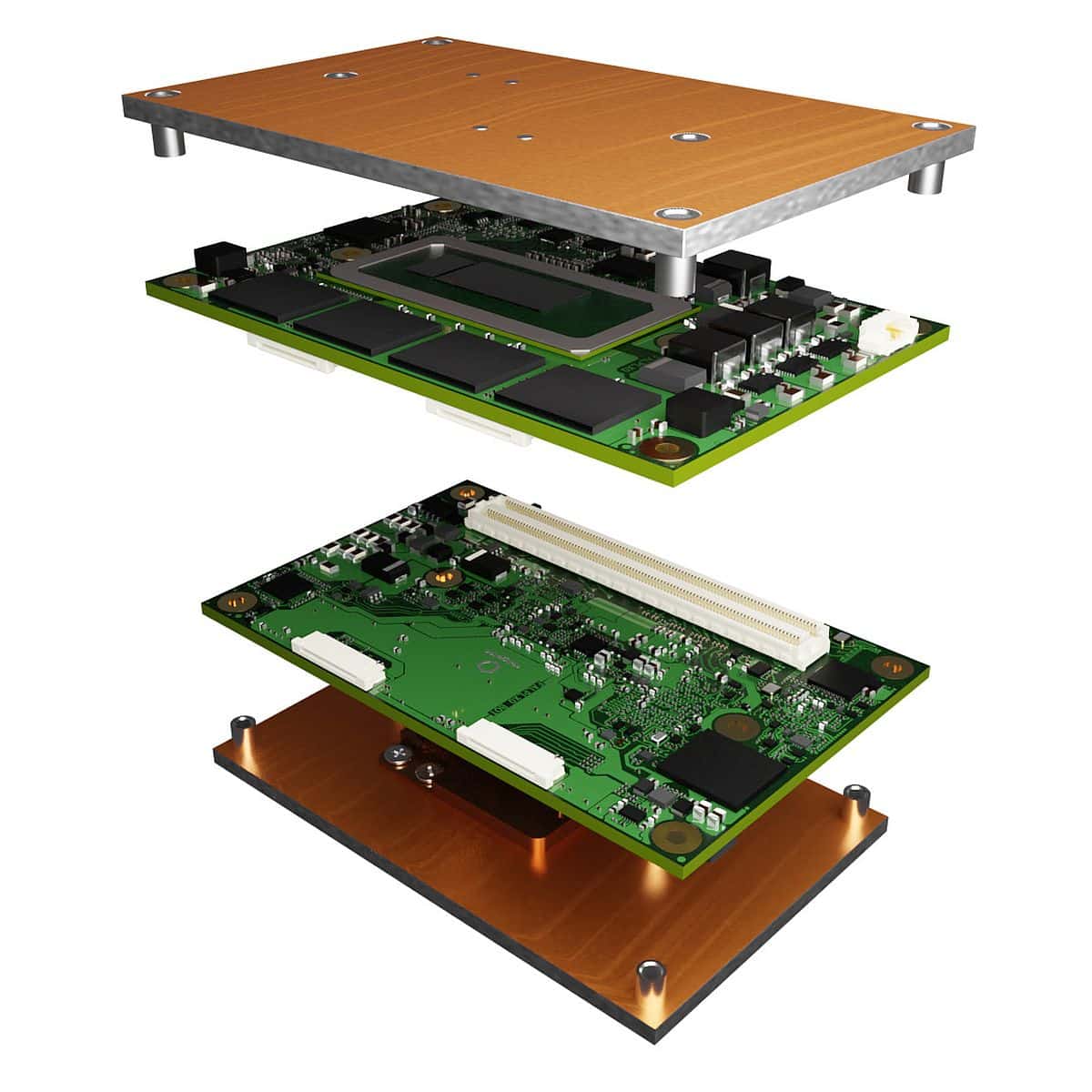
wide margin for high-performance processors with a maximum consumption of up to 76
watts, whereas system designs with COM Express Compact typically support only
up to 45 watts. To allow developers to make the best possible use of the range of
expanded power, congatec offers optimized cooling solutions.
Starting in April 2023, congatec's new motherboard design training program will give engineers an introduction to the world of high-end edge and embedded systems, from PCB design principles to management rules power, signal integrity requirements, and component selection.
Customers who want to use COM-HPC but do not have the resources to integrate the modules themselves can rely on congatec's design services. Motherboard designs, optimized cooling solutions, and extensive system integration services are also offered. With this complete range of products and services, congatec continues to develop its mission of “making embedded technology simpler to use”.
And with this complete offering, from modules, cooling solutions, and application-ready base and evaluation boards, to design training and full design services, congatec is creating a complete COM-HPC ecosystem where new designs and Design processes for the migration from COM Express to COM-HPC Mini are no longer a big challenge.


